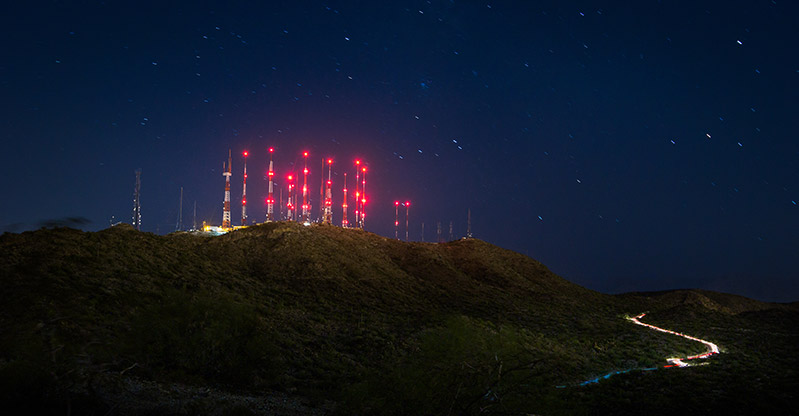The FCC recently issued a $1.13 million fine to (or, more specifically, entered into a “Consent Decree” with) a broadcast group for not properly monitoring and maintaining the lighting on a number of its towers. This is a reminder of how important stations’ tower lighting is, and how seriously the FCC takes violation of the basic tower safety rules. So it seems appropriate to do a quick refresher on the tower safety regulations.

The determination of how a tower (or any tall structure) should be marked, painted or lighted falls within the purview of the Federal Aviation Administration (FAA). Those requirements are published in the FAA Advisory Circular No. 70/7460-1L. This Advisory Circular (AC) sets forth standards for marking and lighting obstructions that have been deemed to be a hazard to air navigation.

Red Obstruction Light Standards
Although the FAA’s lighting and painting standards are advisory in nature, the FCC’s rules make the standards mandatory. The standards and specifications set forth in these FAA documents are incorporated by reference into Part 17 of the FCC’s rules, making these advisory standards mandatory for broadcast and other communications services’ antenna towers.
Part 17 of the FCC Rules require that the owner of any antenna structure registered with the FCC:
- Shall make an observation of the antenna structure’s lights at least once each 24 hours either visually or by observing an automatic, properly maintained indicator designed to register any failure of such lights, to ensure that all such lights are functioning properly as required; or alternatively,
- Shall provide and properly maintain an automatic alarm system designed to detect any failure of such lights and to provide indication of such failure to the owner.
- Shall inspect at intervals not to exceed 3 months all automatic or mechanical control devices, indicators and alarm systems associated with the antenna structure lighting, to ensure that such apparatus is functioning properly.
- Is exempt from the paragraph above for any antenna structure monitored by a system that the FCC’s Wireless Telecommunications Bureau has determined includes self-diagnostic features sufficient to render quarterly inspections unnecessary, upon certification of use of such system to the Bureau.
- Shall report immediately to the FAA, by means acceptable to the FAA, any observed or otherwise known extinguishment or improper functioning of any top steady burning light or any flashing obstruction light, regardless of its position on the antenna structure, not corrected within 30 minutes. If the lights cannot be repaired within the FAA’s Notices to Airmen (NOTAM) period, the owner shall notify the FAA to extend the outage date and report a return-to-service date. The owner shall repeat this process until the lights are repaired. Such reports shall set forth the condition of the light or lights, the circumstances that caused the failure, the probable date for restoration of service, the FCC Antenna Structure Registration Number, the height of the structure (AGL and AMSL, if known) and the name, title, address and telephone number of the person making the report. Further notification to the FAA, by means acceptable to the FAA, shall be given immediately upon resumption of normal operation of the light or lights.
- Shall correct an extinguishment or improper functioning of a steady burning side intermediate light or lights, as soon as practicable, but notification to the FAA of such extinguishment or improper functioning is not required.
For more information see the FCC’s fact sheet on antenna marking and lighting.

